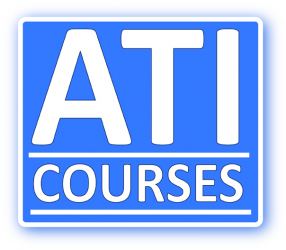ATI's GPS and Other Radionavigation Satellites course
If present plans materialize, 128 radionavigation satellites will soon be installed along the space frontier. They will be owned and operated by six different countries hoping to capitalize on the financial success of the GPS constellation. In this popular four-day short course Tom Logsdon describes in detail how these various radionavigation systems work and reviews the many practical benefits they are slated to provide to military and civilian users around the globe. Logsdon will explain how each radionavigation system works and how to use it in various practical situations.
Each section of the course includes real-world explanations and examples using published inputs from the literature and from the instructor’s personal and professional experiences.
Course Outline:
- Radionavigation Concepts. Active and passive radionavigation systems. Position and velocity solutions. Nanosecond timing accuracies. Today’s spaceborne atomic clocks. Websites and other sources of information. Building a flourishing $200 billion radionavigation empire in space.
- The Three Major Segments of the GPS. Signal structure and pseudorandom codes. Modulation techniques. Practical performance-enhancements. Relativistic time dilations. Inverted navigation solutions.
- Navigation Solutions and Kalman Filtering Techniques. Taylor series expansions. Numerical iteration. Doppler shift solutions. Kalman filtering algorithms.
- Designing Effective GPS Receivers. The functions of a modern receiver. Antenna design techniques. Code tracking and carrier tracking loops. Commercial chipsets. Military receivers. Navigation solutions for orbiting satellites.
- Military Applications. Military test ranges. Tactical and strategic applications. Autonomy and survivability enhancements. Smart bombs and artillery projectiles.
- Integrated Navigation Systems. Mechanical and strapdown implementations. Ring lasers and fiber-optic gyros. Integrated navigation systems. Military applications.
- Differential Navigation and Pseudosatellites. Special committee 104’s data exchange protocols. Global data distribution. Wide-area differential navigation. Pseudosatellites. International geosynchronous overlay satellites. The American WAAS, the European EGNOS, and the Japanese QZSS.
- Carrier-Aided Solution Techniques. Attitude-determination receivers. Spaceborne navigation for NASA’s Twin Grace satellites. Dynamic and kinematic orbit determination. Motorola’s spaceborne monarch receiver. Relativistic time-dilation derivations. Relativistic effects due to orbital eccentricity.
- The Navstar Satellites. Subsystem descriptions. On-orbit test results. Orbital perturbations and computer modeling techniques. Station-keeping maneuvers. Earth-shadowing characteristics. The European Galileo, the Chinese Biedou/Compass, the Indian IRNSS, and the Japanese QZSS.
- Russia’s Glonass Constellation. Performance comparisons. Orbital mechanics considerations. The Glonass subsystems. Russia’s SL-12 Proton booster. Building dual-capability GPS/Glonass receivers. Glonass in the evening news.
Note: For a comprehensive overview of GPS please see The Global Positioning System by Robert A. Nelson.
Speaker and Presenter Information
For more than 30 years, Thomas S. Logsdon, has conducted broadranging studies on orbital mechanics at McDonnell Douglas, Boeing Aerospace, and Rockwell International His key research projects have included Project Apollo, the Skylab capsule, the nuclear flight stage and the GPS radionavigation system. Mr. Logsdon has taught 300 short course and lectured in 31 different countries on six continents. He has written 40 technical papers and journal articles and 29 technical books including Striking It Rich in Space, Orbital Mechanics: Theory and Applications, Understanding the Navstar, and Mobile Communication Satellites.Expected Number of Attendees
8Relevant Government Agencies
Air Force, Army, Navy & Marine Corps, DOD & Military, Dept of Energy, Dept of State, Dept of Transportation, NASA, CIA, Coast Guard
This event has no exhibitor/sponsor opportunities
When
Mon-Thu, Aug 1-4, 2011, 8:30am - 4:30pm
Where
Dayton, OH
Website
Click here to visit event website
Organizer
ATI Courses






